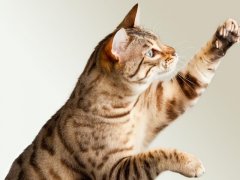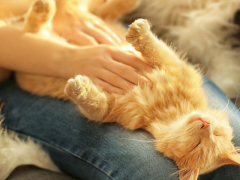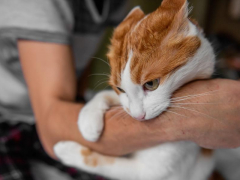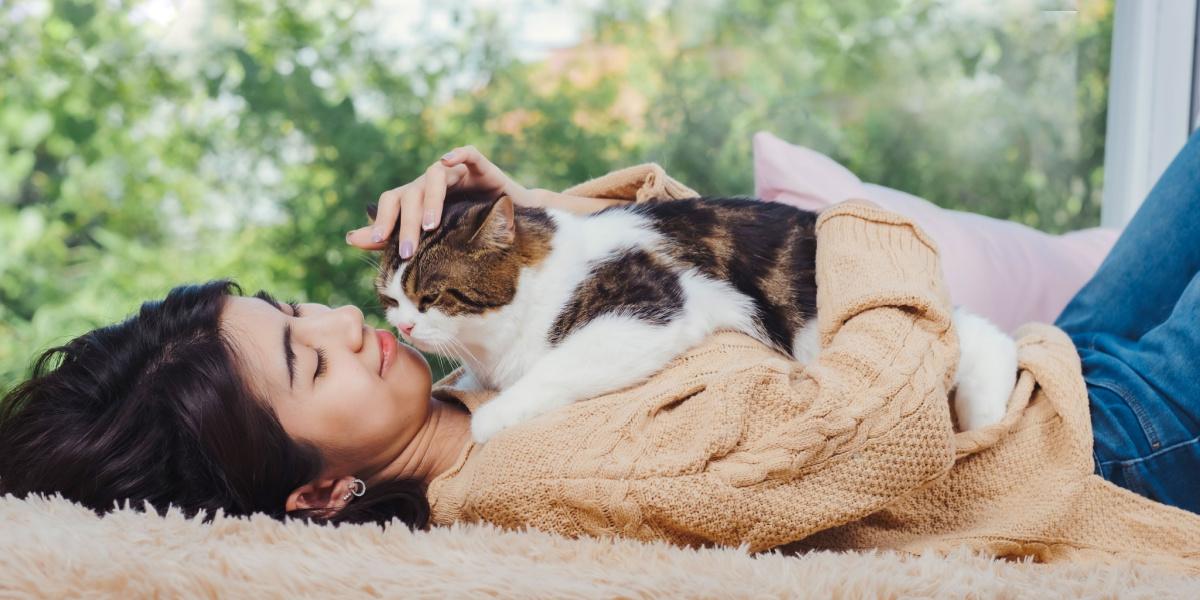
Some cats love to cuddle, always trying to jump onto your lap whenever you sit down for an instant, then immediately twining around your legs for attention if you get up. Other cats are more aloof, preferring to keep their own space.
If your cat loves a snuggle, it is probably down to a love of warmth and security, and their innate affectionate nature. However, a sudden change of behavior in your cat to being much more clingy can indicate a problem, so getting to know your individual cat’s cuddle preferences is key.
Why Does My Cat Love A Cuddle So Much?
There are plenty of good reasons why your cat might love a good old snuggle whenever they can get one. Some of the most common include:
1. Warmth
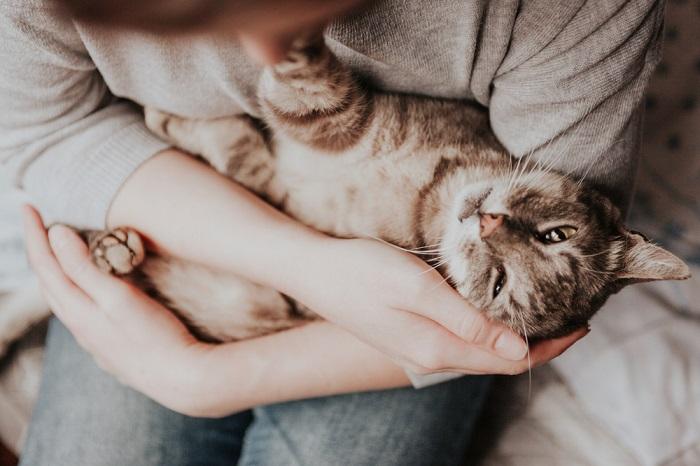
Cats seek out warm places to nap—cuddling with you is an excellent way to keep their body temperature up.
Cats have a relatively high body temperature compared to humans and love to stay warm and cozy. This is especially true when they sleep, as their core temperature drops when resting. Cats need to use artificial means to keep warm, such as beds, blankets—or becoming a lap cat. A cat cuddling up to you, purring away, on those colder days can be extremely pleasant for both cat and pet owners.
Also Read: Why Doesn’t My Cat Cuddle With Me? Top 6 Reasons
2. Security
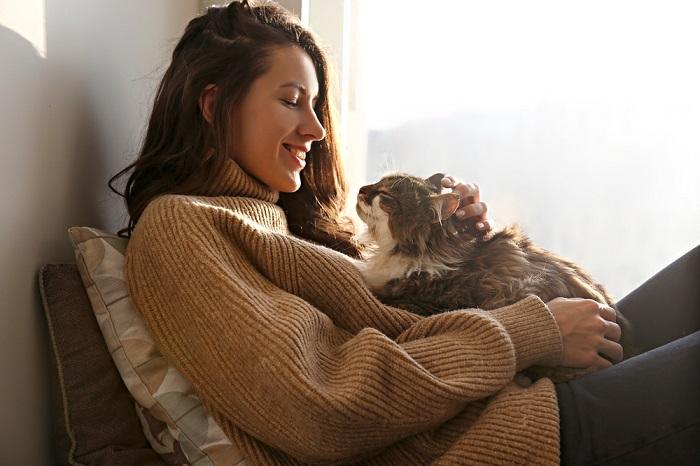
Your cat might like to cuddle a lot because you makes them feel safe.
Cat behavior is mostly based around self-preservation, and cats are well aware that they are more vulnerable when sleeping. This isn’t really applicable to our modern-day pets, as nowadays cat owners provide their adorable pets with safety, warmth, food, and all their other needs. However, natural instincts are strong, and cats will often seek out a safe place to snooze.
If your cat likes to cuddle up with you, this is a sign of a strong bond and a definite compliment. Your furry friend might even indulge in some kneading of your legs, or give a purr or two—take it all as a compliment! Some cats will become extra cuddly if something has made them anxious, such as loud noises, or a new pet in the household.
Also Read: The 13 Most Affectionate Cat Breeds That Love to Cuddle
3. Affection
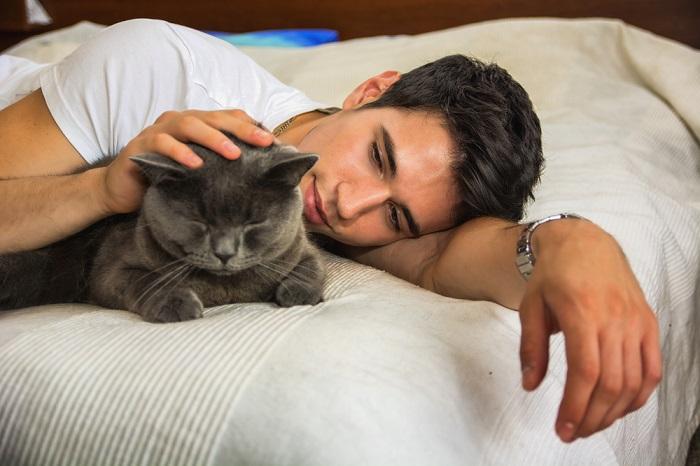
Your cat might cuddle a lot because they have a naturally affectionate personality.
Feline behavior is fascinating and complex, but sometimes things are just as they seem. Some cats just love cuddles! All cats are individuals, and some are more affectionate than others. Some felines love a snuggle, others use the slow blink as their chosen sign of affection, and many others use head-butts to show their love.
Some cats even allow a belly rub. As with all individuals, cats will have their own likes and dislikes, and you will come to recognize their own love language.
Also Read: How Cats Choose Their Favorite Person?
Are Some Cats Cuddlier Than Others?
Definitely there is a range of tolerance and liking for physical affection in the cat world. There are some reasons as to why some cats are more demonstrably loving than others.
1. Personality
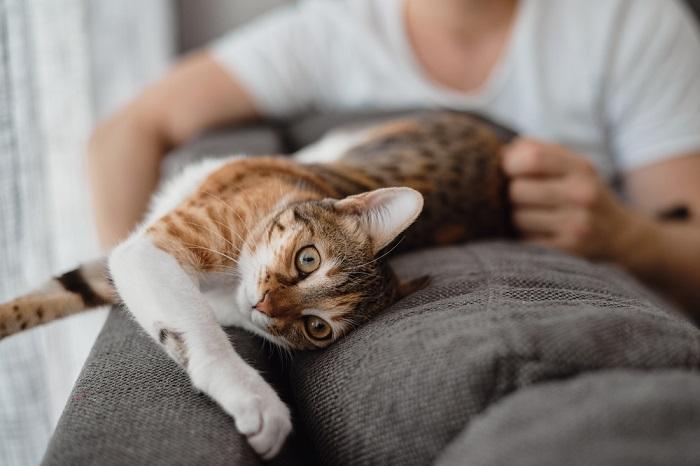
Cats all show affection in different ways, whether cuddling, headbutting you, or simply wanting to hang out in the same room as you.
Your cat’s personality will influence how they show affection. Just like humans, some cats are more aloof, and some are more loving. Cat communication can be subtle, and if your cat is not super cuddly, this doesn’t mean that they aren’t bonded to you.
Watch out for slow blinks (a cat’s way of saying “I love you”), bunting their head at you, running to greet you with their tail up, kneading at you, bringing you toys, or just choosing to spend time with you. These are all affectionate cat traits, and you might find your cat is giving you more loving signals than you realized if you pay attention to these more subtle signals.
Also Read: 10 Proven Ways To Show Your Cat You Love Her
2. Socialization
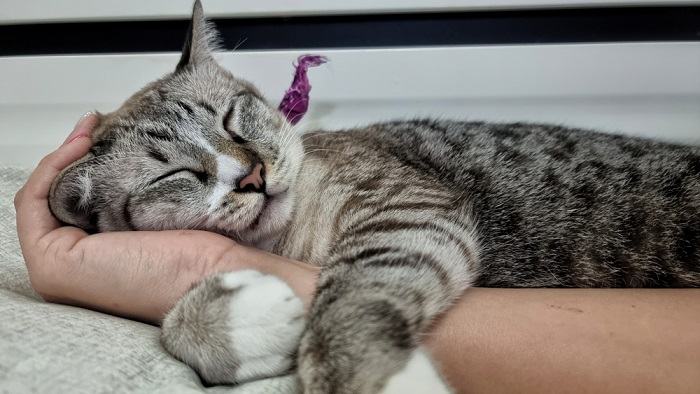
Cats that were well socialized as kittens are more likely to be comfortable with human closeness and touch.
In kittenhood, cats go through an important developmental period called socialization. This is when they become familiar with what is normal in their environment and what is potentially a threat.
Cats that are handled, petted, and cuddled regularly when young will be more likely to display these behaviors as adult cats. Those that had a more difficult, and less loving, start in life are more likely to be anxious in adulthood and less certain about physical contact.
Also Read: What Is the Difference Between a Stray Cat and a Feral Cat?
3. Breed
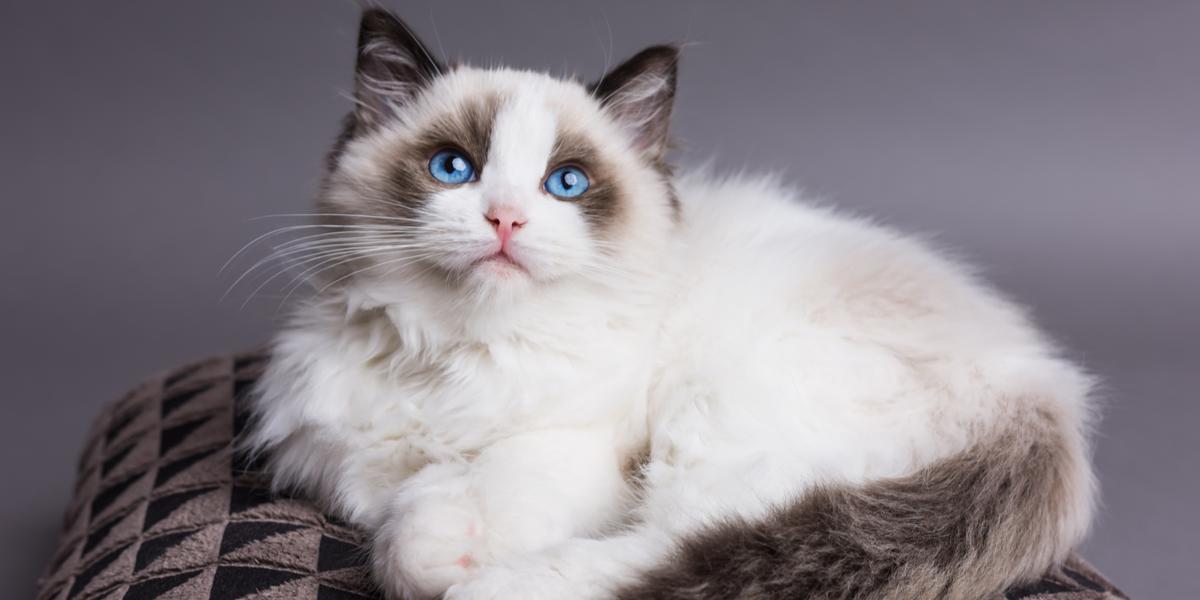
Some breeds like the Ragdoll are known for the cuddly tendencies, though individual cats of any breed will have their own preferences.
There are some cat breeds that are known to be more cuddly than others. The Ragdoll is well known to be very social and bonded to their owners, always wanting to be in human company and physically affectionate. The Persian is also recognized as a definite lap cat, content to snooze on their chosen person all day long. Other super-loving breeds include the Maine Coon, Burmese, and Sphynx.
How Can I Get My Cat To Cuddle Me?
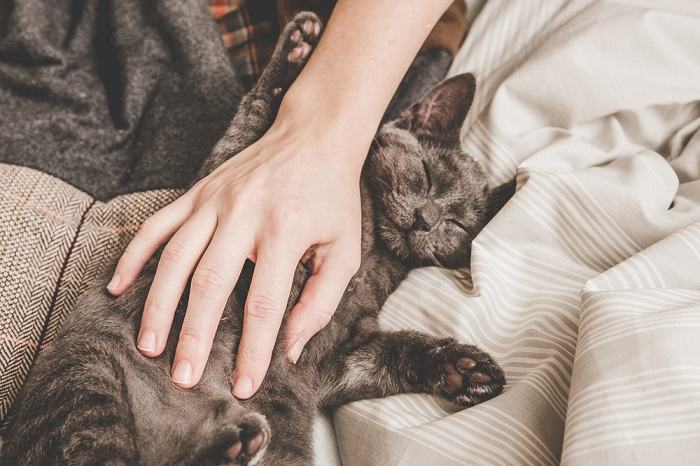
It’s possible to help an anxious cat develop more confidence so they might be more open to cuddles and other physical affection.
Our pet cats are our responsibility, and their well-being should always be a priority. This includes respecting their individual likes and dislikes. If your cat isn’t very cuddly, then try some other forms of loving cat communication, such as giving them some slow blinks, or bonding with them through play.
If you have an anxious cat and you are trying to build their confidence to allow them to be more affectionate, then take the process very slowly. Start by spending time with them, sitting near them or next to them, and giving some gentle strokes, lots of slow blinks, and perhaps some tasty treats. Smoothing your hand around their cheeks and chin will help spread facial pheromones, which help cats decipher what is safe and trustworthy.
Gradually build up to sitting next to your cat and slowly snuggling up with them. Try putting a soft blanket on your lap to entice them, or something tasty to eat. Plenty of time and patience is key to this type of behavioral change.
Also Read: 10 Signs Your Cat Really Does Trust You
Why Is My Cat Suddenly So Clingy?
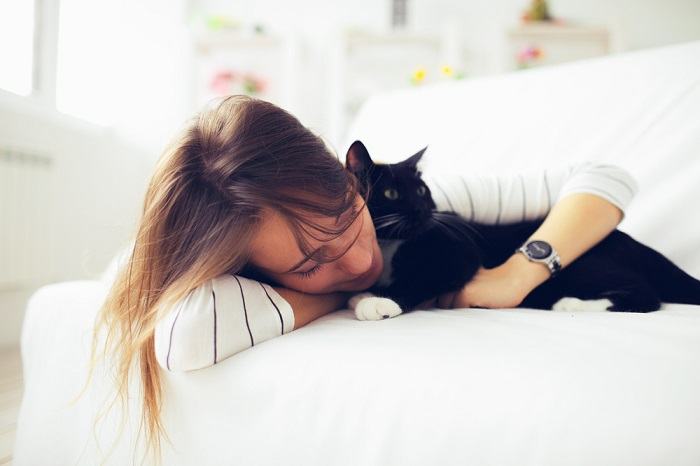
If your cat has always been independent, and now is clingy, talk to your veterinarian to make sure all is well.
If your cat has been a determined snuggler since kittenhood, cuddles with them are ordinary. However, if your cat has suddenly become more affectionate, this might be cause for concern. Any abrupt behavioral change in cats should always be regarded as a potential sign that something is wrong.
Cats might change their habits, behaviors, and routines as a response to stress, anxiety, or illness. They might hide away more and reject cuddles and companionship, or go the other way and become very demanding of your time. Stress in cats can also manifest as separation anxiety, excessive meowing, changes to appetite or litter box habits, or over-grooming.
If your cat is showing any of these signs, seek advice from a veterinarian. Behavior changes can be important indicators of cat health.
Cats And Cuddles: Final Thoughts
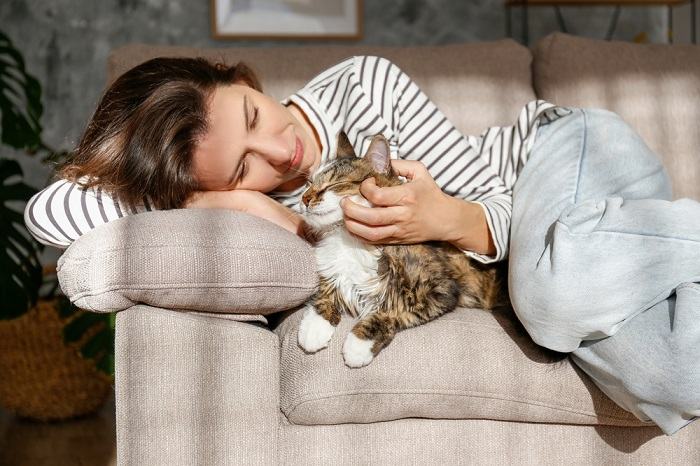
Cat cuddles are mutually enjoyable for both human and cat, and can even deepen your bond.
Many cats are physically demonstrative to those they are bonded to, be that through snuggles or other signs of affection. Cuddles are a great way for your cat to be loving toward you while also keeping themselves warm and safe. Cats might grow up to enjoy affection due to their breed, early experiences, or just their personality.
Sudden changes in behavior can be a worrying sign, so spend some time learning about your cat’s character, likes, and dislikes so that you can pick up on any changes quickly and seek veterinary advice if needed.
Also Read: Cat Love Bites: 5 Reasons Why They Do It & How To Respond

